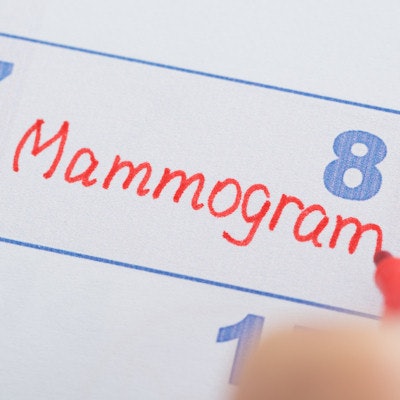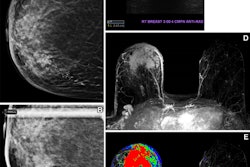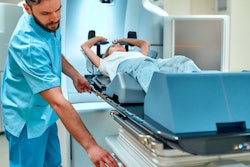
Online patient portal self-scheduling and self-referral methods can help mitigate health disparities in breast cancer screening, according to research published July 26 in the Journal of the American College of Radiology.
A team led by Ben Sadeghi, MD, from the University of California, Irvine (UCI) found that women who live in the most socioeconomically disadvantaged neighborhoods are more likely to self-schedule for screening mammography. They also reported that Black women, women on Medicaid, and women living in the most disadvantaged neighborhoods are more likely to self-refer.
The researchers wrote that their results suggest that these pathways for screening mammography "have been successful in addressing some of the existing scheduling barriers and are a step towards closing the disparity gap."
According to the U.S. Centers for Medicare & Medicaid Services (CMS), a healthcare provider's referral is not needed to obtain screening mammography. Along with that, the researchers pointed out that bypassing clinic visits and physician referrals is good for patient-centered care and better access to screening mammography for timely care.
Sadeghi and colleagues wanted to investigate how online self-scheduling and self-referral portals are used, as well as which groups of women use them more at UCI Health.
UCI Health in 2021 implemented a self-scheduling process using the online patient portal, MyChart (Epic Systems). Here, patients have multiple options: a traditional scheduling process that involves calling the imaging center following a provider order or self-refer without a provider order; or self-schedule, where patients receive electronic notifications through MyChart to schedule their appointments after a provider order. Patients can also self-refer without a provider order and self-schedule via MyChart. Once scheduled, patients are given directions, visit instructions, and periodic reminders.
They included data from 22,306 women with an average age of 59 years who were scheduled for a screening mammogram. Of the total, 3,566 (16.0%) used online self-scheduling and 1,232 (5.5%) self-referred for mammography.
The team found that Hispanic women (vs. non-Hispanic women), Asian women (vs. white women), and women living in the most (vs. least) disadvantaged neighborhoods are more likely to self-schedule. This included odds ratios (ORs) of 1.39, 1.64, and 1.16, respectively.
The researchers also found that Black women (vs. white women), women on Medicaid (vs. commercial insurance), and women living in the most (vs. least) disadvantaged neighborhoods are more likely to self-refer. This included ORs of 1.89, 3.70, and 1.52, respectively.
On the other side, the team found that among the women least likely to self-schedule and self-refer included those aged 70 or older and Spanish-speaking women. Women on Medicaid were also found to be least likely to self-schedule.
The study authors wrote that their results show that these online portals reduce scheduling barriers for women who adhere less to breast cancer screening guidelines, indicating that self-scheduling and self-referral could help close the health gap among racial and ethnic, as well as socioeconomic populations.
However, they also called for future research to compare screening rates among these patient populations before and after implementation of self-scheduling pathways.
The study can be found in its entirety here.




















